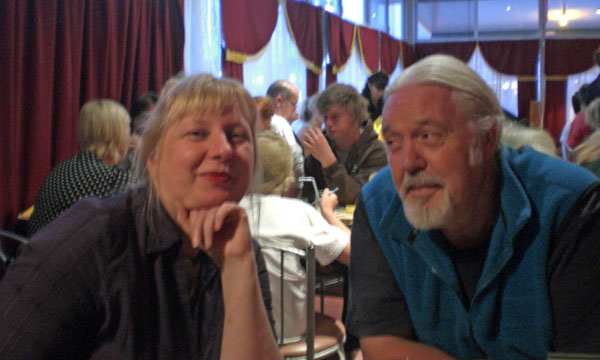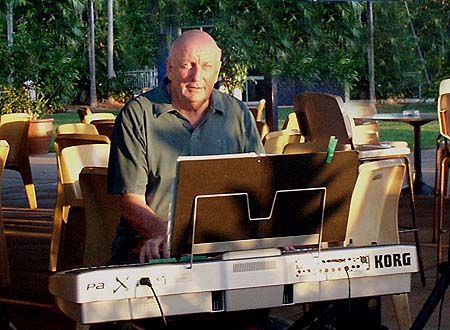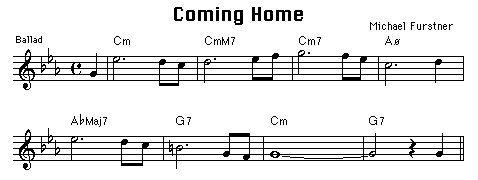7. Charlemagne and the modern
synthesizer
---------------------------------
Previous - Next -
Contents
Coming Home : by Michael
Furstner
 A few times I have referred in my Blog to the famous statement by
Charlemagne who once pronounced that
A few times I have referred in my Blog to the famous statement by
Charlemagne who once pronounced that "to speak an other
language is to possess an other soul."
Those who do speak a language other than their native tongue know
above statement to be true.
For the moment you start speaking another language you
immediately are drawn into the culture of the country and people who
speak that language. It is quite remarkable and one of the main
reasons I enjoy returning to Europe where I can speak Dutch, German
or even a bit of French or Spanish. For each language a different
perspective of my personality comes to the fore.
 Another thought, very much in line with Charlemagne's profound
statement, struck me the other day when I was listening again to one
of my Jazz compositions, Coming Home I had recorded in 2008.
Another thought, very much in line with Charlemagne's profound
statement, struck me the other day when I was listening again to one
of my Jazz compositions, Coming Home I had recorded in 2008.
Most of the 80 or more songs I have composed over the years
illustrate specific educational aspects of music in my lessons, but a dozen or so I
wrote prompted by a special mood or emotion.
Coming Home is
one of those. It expresses the feeling of joy and happiness when
returning home to the one you love.
 Modern day digital sampling of the sounds of various instruments is absolutely
amazing.
Modern day digital sampling of the sounds of various instruments is absolutely
amazing.
They are so realistic that, unless you actually see the
keyboard player playing a synthesizer, you would swear the performer was playing a
guitar, a saxophone or a flugel horn.
The sound also has a profound effect on the mind and creative
direction of the performer.
Although you are playing a
keyboard, feeling the keys with your fingers, the sound produced
instantly draws you into the nature (read "culture") of the
instrument it belongs to.
My recording of Coming Home shows this
aspect well.
The recording covers 4 choruses of the song. The
first chorus is the melody played with a acoustic guitar sound. The
following three choruses are improvisations played with the sounds of
a vocal group, then a tenor sax and finally the acoustic guitar
(which repeats part of the melody over the final 8 bars).
The different moods reflected by the three instruments are shown in the
following table.
MP3 recording : Coming
Home
(Please listen to it through quality ear
phones or speakers)
| Chorus
| Type
| Instrument
| Mood
|
| 1
| Melody
| Acoustic guitar
| guitar articulation
|
| 2
| Improvisation
| Vocal group
| mellow, soothing
|
| 3
| Improvisation
| Tenor saxophone
| earthy, exuberant
|
| 4
| Improvisation
| Acoustic guitar
| playful
|
So, just like speaking an other language draws a person into the
culture of that language, the sound of an instrument (played on a
synthesizer or intelligent keyboard) draws the performer into the
nature and mood of the genuine instrument.
Coming Home is a
32 bars long song. It is in the AABA format, typical of many
Jazz standards.
The song starts with an 8-bar "A-section" which is repeated once.
This is followed by the 8-bar long bridge or "B-section". The chorus
is completed by a third and final A-section.

The sequence of chords ("chord progression") that underlies the A-section of the song is the same as for many famous ballads, like
My Funny Valentine (Rogers & Hart), Masquerade
(Leon Russell) and Feelings (Morris Albert).
For this song's ending see Richard Feynman's "Sum over Histories"
|
Next Page -
Top of Page
Copyright © 2017 Michael
Furstner
|



